Spaceward Ho! (Ariton) – $4.99
Number of Results: 36
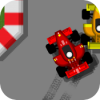
Retro Racing-What’s in a Name? Everything.
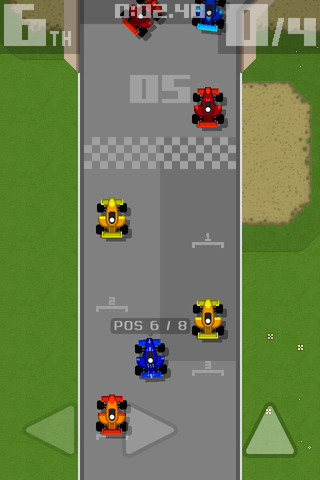
Controls
In Retro Racing, the controls are fairly simple: tap on the forward arrow to go forward and the sideways ones to go sideways (sometimes called turning.) If when playing this game you can’t understand that, even after the tutorial, and you aren’t a cat, I will personally write a letter of apology to your pride. Anyhow, the controls work alright, but they feel very cramped, mainly on iPhones or iPod Touches (on the iPad it’s much better.) One nice option would be an ‘auto-gas with left and right arrows on the sides’ control scheme or a landscape mode, both of which might help ease the controls’ weaknesses. Still, the current controls just don’t seem good enough most of the time. At times they work decently, but the sensitivity sometimes can be hard to judge even then, leading to crashes in-game. Most of the time though, they work fairly well, but they don’t provide the best possible execution consistently.
3.5/5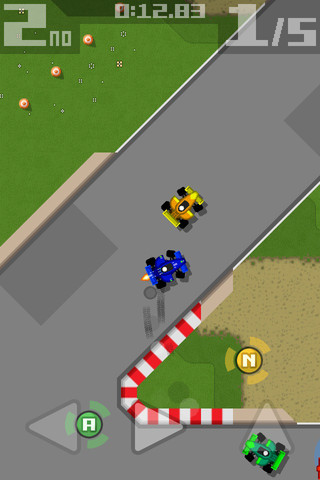
Graphics/Gameplay
As the name implies, Retro Racing employs retro-styled graphics. While they’re not stunning, they get the job done perfectly well. It also plays great and is very enjoyable. As you could guess, the goal is to race through each level as fast as you can and to get first place. There are leaderboards for every track, fitting the style and pace of the game. There’s also a nifty two-player mode which pits you against another opponent (one-device only), which works very well and is really fun as well, even on the smaller iPhone. This is available for both iPhone and iPad after the recent update. Each race also has a variety of “power-ups” that boost your stats, plus nitro boosts as well. These make the game fun and fresher at its lower moments. While its still a stereotypical racing game in many aspects, it creates a fun-filled nostalgic game.
4.5/5
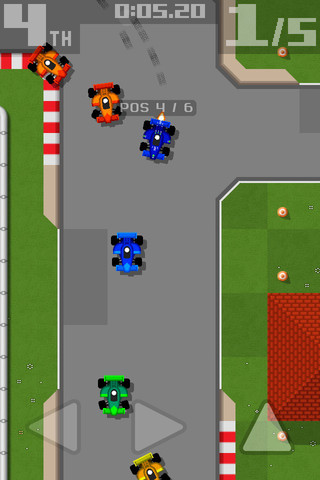
Level Design
The highlight of the game, though, lies in its nifty level design. In most racing games, the level’s just the track and where it turns. That’s not the case in ‘Retro Racing’. Each level is packed with a good amount of power-ups, extra paths, and more that make each level fresh and fun. False turns, cones, walls, and other cars all stand in the way of you and the finish line. The most enjoyable part of the game is how much the level design plays a part into the game. A nitro power-up could propel you into first place. Crashing into cones could lose you a position, while turning on a false turn could destroy your shot at taking the checkered flag. The level never feels unjustly made; even the frustrating moments make me want to play more. Each level feels carefully made to be the best it can be, and in turn propels the game
5/5
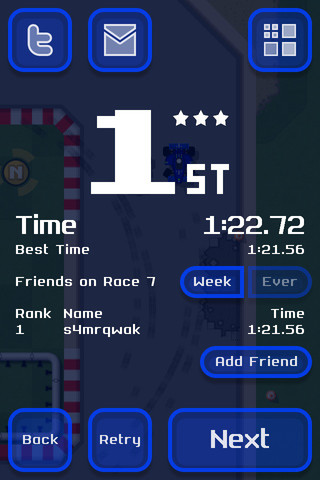
Balance
The weakest point in the game, however, lies in its balancing. If you ever want to achieve a score anywhere high in the leaderboards you have to purchase an extra $.99 car pack, which unlocks the final three cars, meaning that if you care about that type of thing, you will be wanting to buy the iAP, which seems missing in tact and unfair. The game feels somewhat balanced in its ‘campaign’, with the basic cars (and very rewarding when you win) but would get too easy with the iAP cars since their stats are over twice as high as the best of the basic cars. Plus, all the basic cars are unlocked from the get-go, meaning there’s no sense of progression there, besides levels. Often times that’s simply not enough, which can lead the game down some dire straits.
3/5
Overall:
Retro Racing is a nice game weakened by so-so controls and imperfect balancing. However, if you’re a fan of the ‘retro’ or of the ‘racing’ then these problems are easily overcome by the sweet level design and fun gameplay, providing a very fun approach to the racing genre.
4/5
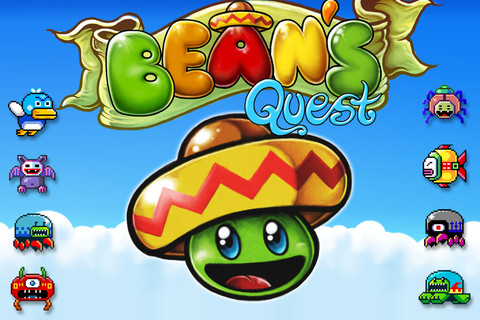
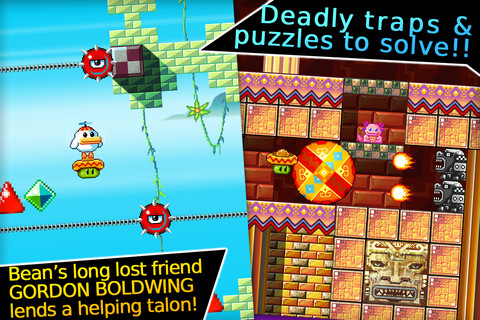
Graphics/Music: 4.5/5
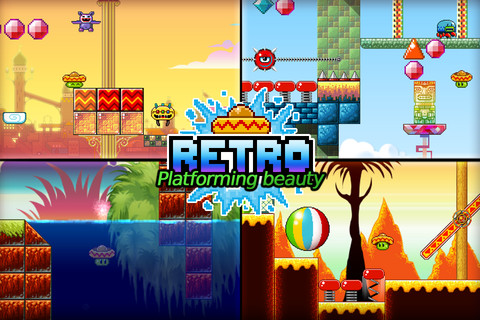
Bean’s Quest (is currently on sale from $2.99 to $0.99 in celebration of its most recent, content doubling update)
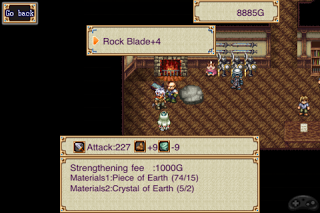
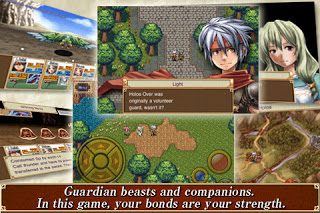
![]() If you’re a regular reader of TheAppShack, you probably know by now that my favorite genre of video games is platformers. Especially exploratory platformers. As I’ve said a few times, Metroid II – Return of Samus is my favorite video game of ALL TIME. These days, my iPod is my main gaming console, and yes, I know how weird that is, and that I am in a very small group of people here, but anyway, I have been hoping that Metroidvania titles would become more frequent in the AppStore. Phoenix Spirit and Grokion seemed to be the only titles within this genre for quite some time, but over the last year or so, Metroidvania fans have grown, or, more likely, have gotten iDevices, and releases like Elemental Rage, Miss Claire Garden, Cordy, Glowfish, Emberwind, BlibBlob, Shantae, SpyCorp, and a few more have added loads of fuel to the fire. Granted, not all of these are TRUE Metroidvania titles, but they do incorporate quite a bit of exploration, and for die-hard fans of the genre, that’s usually enough. So now, when a platformer comes along that has “exploration” mentioned within 5 feet of it, I’m usually one of the first people to jump all over it.
If you’re a regular reader of TheAppShack, you probably know by now that my favorite genre of video games is platformers. Especially exploratory platformers. As I’ve said a few times, Metroid II – Return of Samus is my favorite video game of ALL TIME. These days, my iPod is my main gaming console, and yes, I know how weird that is, and that I am in a very small group of people here, but anyway, I have been hoping that Metroidvania titles would become more frequent in the AppStore. Phoenix Spirit and Grokion seemed to be the only titles within this genre for quite some time, but over the last year or so, Metroidvania fans have grown, or, more likely, have gotten iDevices, and releases like Elemental Rage, Miss Claire Garden, Cordy, Glowfish, Emberwind, BlibBlob, Shantae, SpyCorp, and a few more have added loads of fuel to the fire. Granted, not all of these are TRUE Metroidvania titles, but they do incorporate quite a bit of exploration, and for die-hard fans of the genre, that’s usually enough. So now, when a platformer comes along that has “exploration” mentioned within 5 feet of it, I’m usually one of the first people to jump all over it.
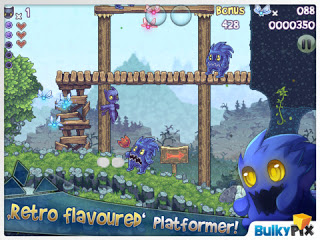 FireFruitForge has been working on a little game that’s going by the name Terra Noctis (originally named After Dark, if any readers out there heard of it a while back, but they decided to change the name so as not to run into any legal issues). It’s a retro inspired platformer, with influences from Super Mario Brothers, Donkey Kong, and has quite a bit of exploration thrown in as well. There are 3 difficulty levels, Normal, Hard, and Nightmare, with the harder difficulties having more enemies, more traps, and less platforms.
FireFruitForge has been working on a little game that’s going by the name Terra Noctis (originally named After Dark, if any readers out there heard of it a while back, but they decided to change the name so as not to run into any legal issues). It’s a retro inspired platformer, with influences from Super Mario Brothers, Donkey Kong, and has quite a bit of exploration thrown in as well. There are 3 difficulty levels, Normal, Hard, and Nightmare, with the harder difficulties having more enemies, more traps, and less platforms. 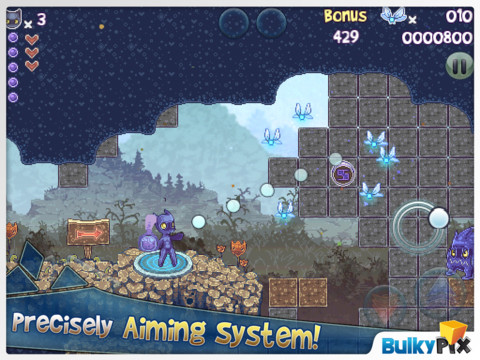 Now, once you start up the game, choose a difficulty, enter the first level, and start making your way to the end of the level, you’ll notice immediately that the level design is very well thought out. You’ll have quite a bit to look forward to as you make your way through the game, because it only gets better as you progress. The level design throughout the game is actually some of the best I’ve ever experienced. The amount of time and thought that must have gone into the design is apparent pretty much every step you make. Not to mention how much time must have gone into testing the levels to make sure jumps were just right, and everything got lined up perfectly.
Now, once you start up the game, choose a difficulty, enter the first level, and start making your way to the end of the level, you’ll notice immediately that the level design is very well thought out. You’ll have quite a bit to look forward to as you make your way through the game, because it only gets better as you progress. The level design throughout the game is actually some of the best I’ve ever experienced. The amount of time and thought that must have gone into the design is apparent pretty much every step you make. Not to mention how much time must have gone into testing the levels to make sure jumps were just right, and everything got lined up perfectly. 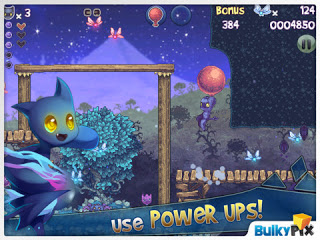 It’s clear, after playing the game, that Terra Noctis is very deserving of it’s $2.99 price-tag, if not more. Being Universal, including iCade support, the amount of content, especially for 100% completionist fanatics, and the OpenFeint leaderboards, 24 hard to snag achievements, as well as top scores for each level that are shown at the level select screen, should keep any gamer, even platformer fanatics, busy for quite some time. It’s easily one of the best platform games I’ve ever had the pleasure of playing, and the amount of work, time, effort, and testing that has gone into Terra Noctis, shines through with every single frame of the game. After being able to play this for the last two weeks, I can very confidently say that it is my #3 favorite game of 2011, right under Space Tripper and Anomaly Warzone Earth. With Normal difficulty very reminiscent of the difficulty in old-school Mario games, Terra Noctis is great for all gamers, and is HIGHLY recommended. FireFruitForge has given iOS gamers a phenomenal piece of art all wrapped up in a tightly controlled, highly enjoyable, modern/old-school mesh of a video game. Everyone with an iDevice should grab it as soon as possible
It’s clear, after playing the game, that Terra Noctis is very deserving of it’s $2.99 price-tag, if not more. Being Universal, including iCade support, the amount of content, especially for 100% completionist fanatics, and the OpenFeint leaderboards, 24 hard to snag achievements, as well as top scores for each level that are shown at the level select screen, should keep any gamer, even platformer fanatics, busy for quite some time. It’s easily one of the best platform games I’ve ever had the pleasure of playing, and the amount of work, time, effort, and testing that has gone into Terra Noctis, shines through with every single frame of the game. After being able to play this for the last two weeks, I can very confidently say that it is my #3 favorite game of 2011, right under Space Tripper and Anomaly Warzone Earth. With Normal difficulty very reminiscent of the difficulty in old-school Mario games, Terra Noctis is great for all gamers, and is HIGHLY recommended. FireFruitForge has given iOS gamers a phenomenal piece of art all wrapped up in a tightly controlled, highly enjoyable, modern/old-school mesh of a video game. Everyone with an iDevice should grab it as soon as possible
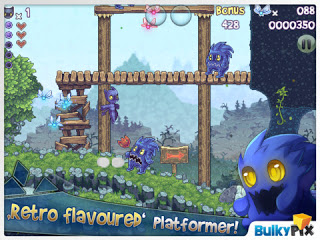
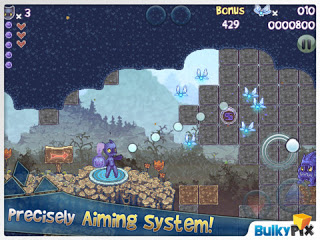
![]() Endless Runners seem to be perfect for mobile gaming. They’re good for quick little spurts of playing, as well as long gaming sessions, and there’s an endless supply of them to top it off. Seems there’s a huge selection depending on what type of endless runner you’ve come to like, casual, hardcore, level based, hectic, relaxing, and within all of those styles, there’s always certain titles that stick out above all the others because of their controls, gameplay, and style. Super Bit Dash by FakePup seems to cover all of those preferences, as well as raising above the average title, and being a game that’s more addictive, more polished, and more entertaining than most.
Endless Runners seem to be perfect for mobile gaming. They’re good for quick little spurts of playing, as well as long gaming sessions, and there’s an endless supply of them to top it off. Seems there’s a huge selection depending on what type of endless runner you’ve come to like, casual, hardcore, level based, hectic, relaxing, and within all of those styles, there’s always certain titles that stick out above all the others because of their controls, gameplay, and style. Super Bit Dash by FakePup seems to cover all of those preferences, as well as raising above the average title, and being a game that’s more addictive, more polished, and more entertaining than most.
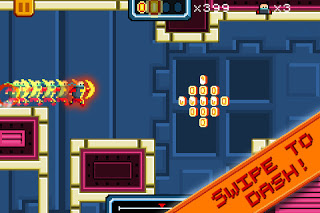 In Super Bit Dash, you’ll guide your character through either a short 5 minute checkpoint based run with multiple lives, earned by collecting coins, with two difficulties, as well as an endless run with one life that also has two different difficulty settings. To control the character, you’ll need to collect coins which fill up a bar that gives you the ability to swipe on the screen, and dash up, down or forward, as well as being able to tap on the screen to do a regular jump, or swipe backwards to slow down, both of which do not require coins to do. The catch is that you’ll only be able to have 4 coins at a time in your dash gauge, meaning that if you pick a path that doesn’t have many coins, or none at all, you could get stuck without a dash when you really need one.
In Super Bit Dash, you’ll guide your character through either a short 5 minute checkpoint based run with multiple lives, earned by collecting coins, with two difficulties, as well as an endless run with one life that also has two different difficulty settings. To control the character, you’ll need to collect coins which fill up a bar that gives you the ability to swipe on the screen, and dash up, down or forward, as well as being able to tap on the screen to do a regular jump, or swipe backwards to slow down, both of which do not require coins to do. The catch is that you’ll only be able to have 4 coins at a time in your dash gauge, meaning that if you pick a path that doesn’t have many coins, or none at all, you could get stuck without a dash when you really need one.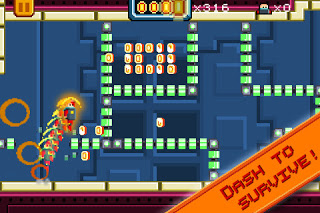 Super Bit Dash is supported by OpenFeint, with leader boards for each mode, as well as each difficulty setting in those two modes, and then leader boards for the best overall Classic and best overall Endless scores. There’s also 10 achievements, most of which should take even hardcore gamers a while to complete. Tough it would be nice to see GameCenter support in the future, as there are plenty of gamers that don’t use OpenFeint anymore. It would also be nice to see some power-ups in the future, like invincibility, or a speed up and slow down pick-ups, as well as a pick up that lets you have unlimited dashes for a short period of time would be a very welcome addition. But for an endless runner, it’s a great deal at $0.99, providing plenty of content, as well as endless replay ability, and even more on the way. Platformer and Endless Runner fans alike will both enjoy the gameplay that provides both casual and hardcore gamers plenty of challenge.
Super Bit Dash is supported by OpenFeint, with leader boards for each mode, as well as each difficulty setting in those two modes, and then leader boards for the best overall Classic and best overall Endless scores. There’s also 10 achievements, most of which should take even hardcore gamers a while to complete. Tough it would be nice to see GameCenter support in the future, as there are plenty of gamers that don’t use OpenFeint anymore. It would also be nice to see some power-ups in the future, like invincibility, or a speed up and slow down pick-ups, as well as a pick up that lets you have unlimited dashes for a short period of time would be a very welcome addition. But for an endless runner, it’s a great deal at $0.99, providing plenty of content, as well as endless replay ability, and even more on the way. Platformer and Endless Runner fans alike will both enjoy the gameplay that provides both casual and hardcore gamers plenty of challenge.